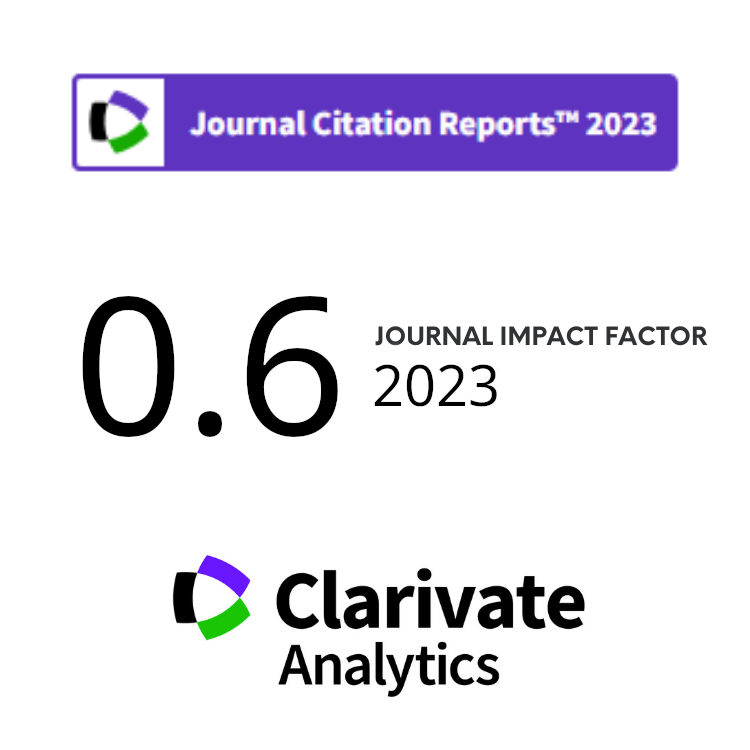Texture Characterization of Duplex Stainless Steel 2205 Using Neutron Diffraction Method
Abstract
Duplex stainless steel (DSS) is widely used in chemical processes, petrochemical, oil & gas industries, and nuclear technology due to its excellent mechanical properties and exceptional generalized and localized corrosion resistance. In this study, the crystal structure, material phases, and texture characterization of DSS were carried out using the neutron diffraction method. The characterization results show that the duplex has two phases: α (ferrite) and g (austenite), each with a lattice parameter 2.8736 Angstrom and 3.6076 Angstrom, respectively. The sample symmetrization method from triclinic to orthorhombic are used to analyze pole figures. The crystallite orientation in the α and g phases have the opposite direction. The α phase has a crystallite orientation towards {110} <001> or Goss orientation, and the g phase, crystal orientation towards {100} <001> or the cube orientation. The orientation distribution function shows that the orientation strength of ferrite is much stronger than austenite. The crystallite orientation (texture) obtained by the orientation distribution function analysis follows the crystal structure analysis.
Keywords
Full Text:
PDFReferences
F. Iacoviello, V. Di Cocco, E. Franzese et al., Procedia Struct. Integr. 3 (2017) 308.
F. Iacoviello, V. Di Cocco and L. D’Agostino, Procedia Struct. Integr. 3 (2017) 276.
V. Di Cocco, F. Iacoviello and G. Ischia, Procedia Struct. Integr. 3 (2017) 299.
J. Pilhagen and R. Sandström, Mater. Sci. Eng. A 602 (2014) 49.
M. A. Makhdoom, A. Ahmad, M. Kamran et al., Surf. and Interfaces 9 (2017) 189.
S. Geng, J. Sun, L. Guo et al., J. Manuf. Process. 19 (2015) 32.
Z. Zhang, H. Jing, L. Xu et al., J. Manuf. Process. 31 (2018) 568.
P. O. Malta, F. L. Dias, A. C. M. de Souza et.al., Mater. Charact. 142 (2018) 406.
S. Emami, T. Saeid, R. A. Khosroshahi and J. Alloys Compd. 739 (2018) 678.
G. M. Xie, H. B. Cui, Z. A. Luo et al., Mater. Sci. Eng. A 704 (2017) 311.
L. Jinlong, L. Tongxiang, D. Limin et al., Corros. Sci. 104 (2016) 144.
G. R. Mohammed, M. Ishak, S. N. Aqida et al., Metals. 7 (2017).
D. Reyes-Hernández, A. Manzano-Ramírez, A. Encinas et al., Fuel 198 (2017) 165.
Y. Choi, Y. Baik, B. M. Moon et al., Nucl. Eng. Technol. 48 (2016) 164.
R. Dakhlaoui, A. Baczmański, C. Braham et al., Mater. Sci. Forum 571–572 (2008) 175.
T. H. Lee, H. Y. Ha, J. Y. Kang et al., Scr. Mater. 67 (2012) 141.
N. Jia, R. L. Peng, Y. D. Wang et al., Acta Mater. 56 (2008) 782.
J. D. Tucker, M. K. Miller and G. A. Young, Acta Mater. 87 (2015) 15.
T. H. Priyanto, R. Muslih, H. Mugirahardjo et al., Makara J. Technol. 22 (2018) 79.
T. H. Priyanto, R. Muslih, H. Mugiraharjo et al., Jurnal Sains Materi 19 (2018) 120.
K. T. Nirosta, Practical Guidelines for the Fabrication of Duplex Stainless Steels, 3rd ed., International Molybdenum Association, London (2014) 1.
K. Pawlik, Introduction to LaboTex, in: Texture Analysis Software for Windows, LaboTex Version 3.0, LaboSoft s.c., Krakow (2011) 1.
K. Pawlik, Fundamentals of 3-D Texture Analysis. Symmetry aspects of 3-D texture analysis, in: The Texture Analysis Software for Windows, LaboTex Version 3.0, LaboSoft s.c., Krakow (2006) 1.
J. Capek, M. Cernik, N. Ganev et al., IOP Conf. Ser. Mater. Sci. Eng. 375 (2018) 1.
N. Jia, R. L. Peng, Y. D. Wang et al., Acta Mater. 56 (2008) 782.
A. Baczmański, E. Gadalińska, S. Wroński et al., Mater. Sci. Forum 768–769 (2013) 289.
DOI: https://doi.org/10.17146/aij.2020.1038
Copyright (c) 2020 Atom Indonesia

This work is licensed under a Creative Commons Attribution-NonCommercial-ShareAlike 4.0 International License.











